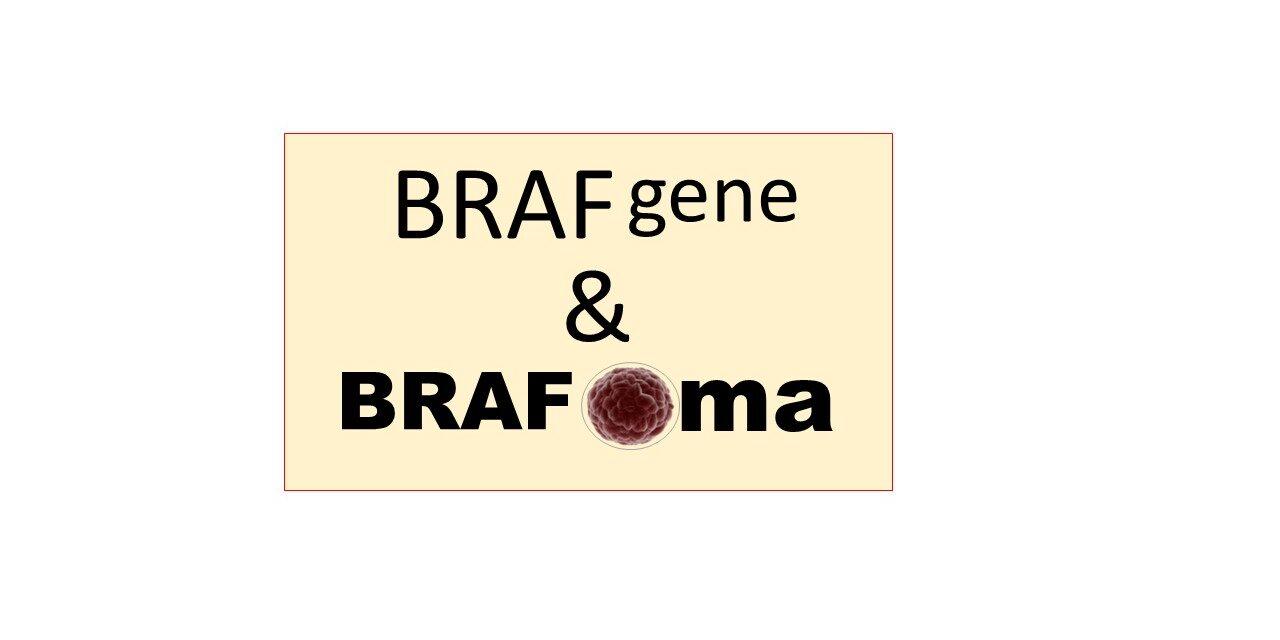BRAF Gene and BRAFomas
Welcome to ilovepathology.com! In this blog post, we will explore the BRAF gene and its significance in cancer development, specifically focusing on BRAFomas. Whether you’re a medical student or simply interested in pathology, this Q&A-style guide will provide you with a solid understanding of the BRAF gene, its mutations, associated cancers, and the groundbreaking tissue-agnostic therapy used for treatment.
What is the BRAF gene, and what does it encode?
The BRAF gene is a gene found on Chromosome 7 that encodes B-Raf, a serine/threonine kinase. B-Raf is a member of the Raf kinase family and plays a crucial role in regulating the MAP kinase/ERKs signaling pathway. It controls how cells grow, multiply, and survive ( as illustrated below).
What is a BRAF mutation, and what is the most common mutation involving the gene?
A BRAF mutation refers to a spontaneous change in the BRAF gene, leading to an alteration in the protein it encodes. The most common BRAF mutation is known as BRAF V600E, where the amino acid valine (V) is replaced by glutamic acid (E) at the 600th position of the protein.
Are there any other common BRAF mutations besides V600E?
Yes, in addition to the V600E mutation, other common BRAF mutations include V600K and V600D. Each mutation may have specific implications for cancer development and treatment strategies.
What are the potential causes of BRAF gene mutations?
While BRAF gene mutations can occur spontaneously, they can also be caused by environmental factors, exposure to certain chemicals or radiation, and inherited genetic predispositions.
How are BRAF mutations detected in cancer patients?
BRAF mutations can be detected through various laboratory tests, such as DNA sequencing or mutation-specific tests, which analyze tumor tissue or circulating tumor DNA obtained from blood samples.
What are BRAFomas, and which cancers are associated with BRAF mutations?
BRAFomas are cancers that occur as a result of BRAF gene mutations. These mutations have been identified as growth drivers in more than 20 different types of solid tumors.
BRAF gene mutations are commonly found in various cancers, including:
Melanoma (a type of skin cancer)
Papillary thyroid carcinoma
Colorectal cancer
Ovarian cancer
Breast cancer
Glioblastoma (a type of brain cancer)
Lung adenocarcinoma
Pediatric low-grade glioma
Less common lesions/tumors include
Hairy cell leukemia
Cholangiocarcinoma (bile duct cancer)
Erdheim-Chester disease (a rare histiocytic disorder)
Langerhans cell histiocytosis
Gastrointestinal stromal tumors (GIST)
Non-papillary renal cell carcinoma
Why is it important to know about BRAF mutations?
Understanding BRAF mutations is vital because they serve as potential targets for therapy. Recently the FDA has granted accelerated approval to a drug combination called Dabrafenib and Trametinib for the treatment of unresectable or metastatic solid tumors with the BRAF V600E mutation. This breakthrough treatment approach is referred to as tissue-agnostic therapy, which means treatment is based on the cancer’s genetic and molecular features, rather than its origin or cancer type.
What does tissue-agnostic therapy mean?
Tissue-agnostic therapy is an innovative approach that focuses on treating cancer based on its genetic and molecular characteristics, rather than its location or cancer type. In the case of BRAF V600E mutations, Dabrafenib in combination with Trametinib has been approved by the FDA as a targeted therapy for various solid tumors harboring this specific mutation.
What are the implications of BRAF mutation testing for patient care?
BRAF mutation testing has significant implications for patient care. Identifying BRAF mutations can help guide treatment decisions, predict response to targeted therapies, and provide prognostic information for patient outcomes.
Conclusion:
Understanding the BRAF gene and its mutations is essential in the context of cancer development and treatment. BRAFomas, driven by BRAF gene mutations, encompass a wide range of solid tumors. The advent of tissue-agnostic therapy, exemplified by the FDA’s approval of Dabrafenib in combination with Trametinib for BRAF V600E-mutated solid tumors, has revolutionized treatment options. By targeting specific genetic and molecular features, this approach provides hope for patients regardless of their cancer type or origin.
Stay tuned to ilovepathology.com for more fascinating insights into the world of pathology






